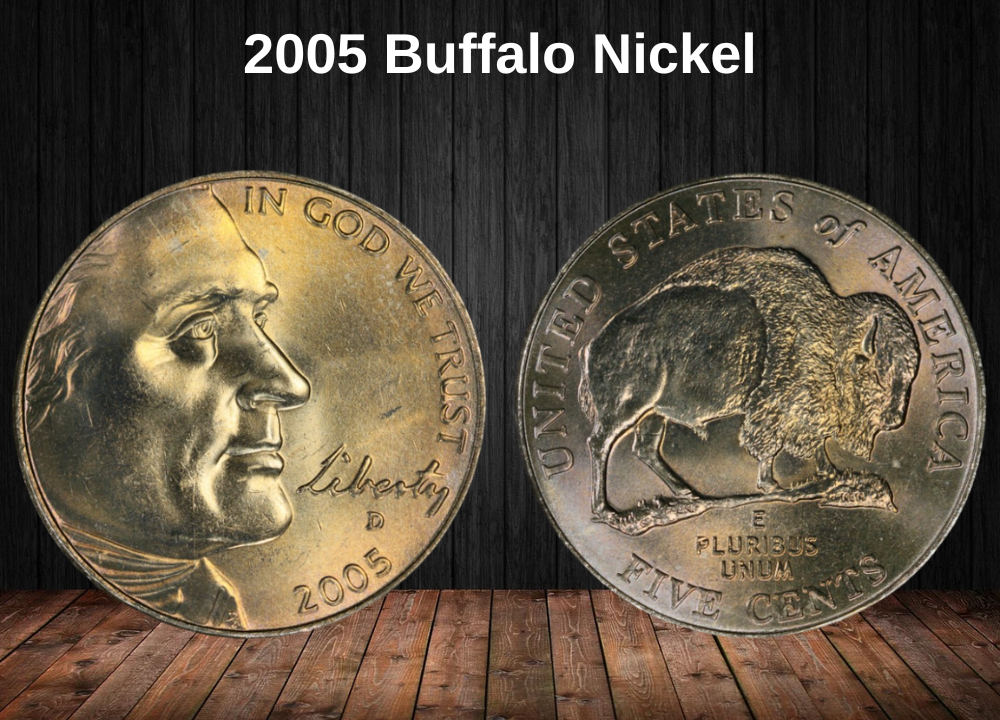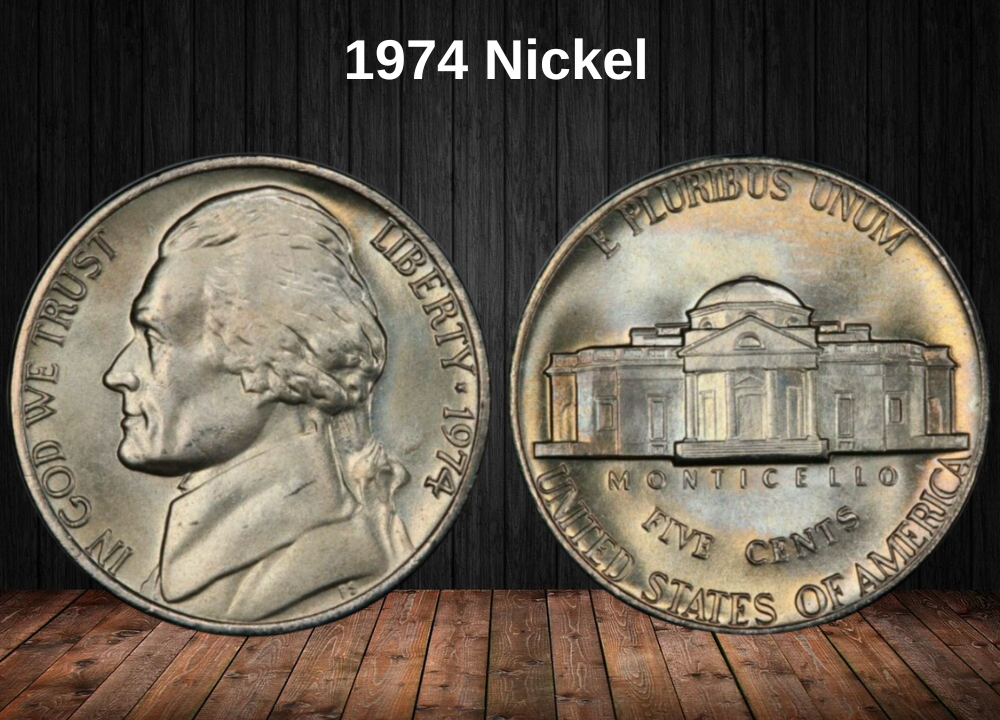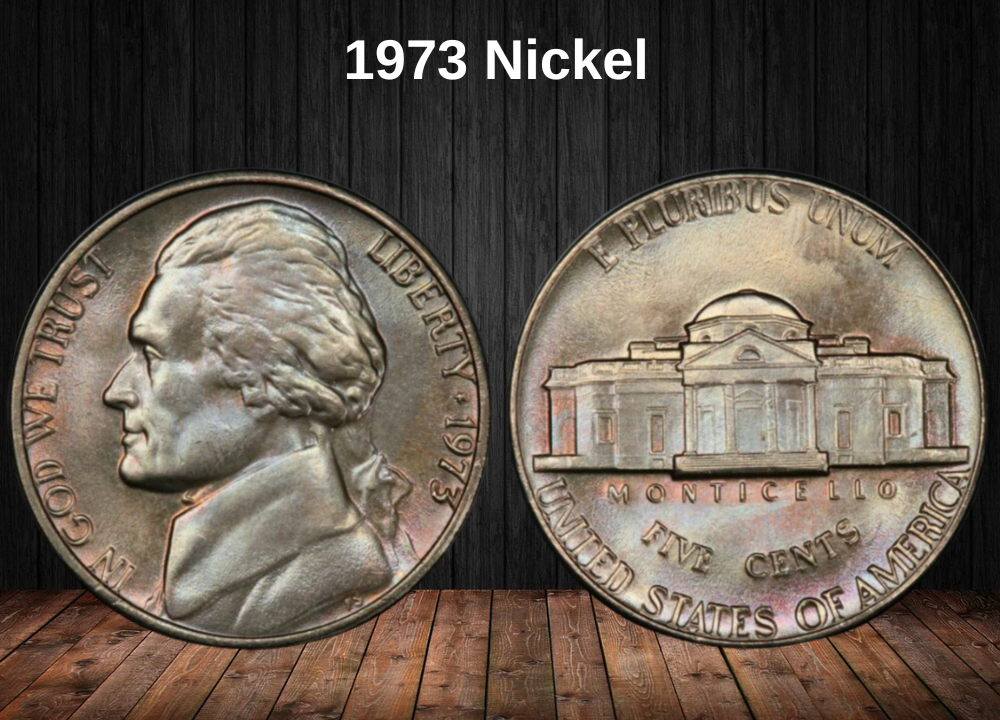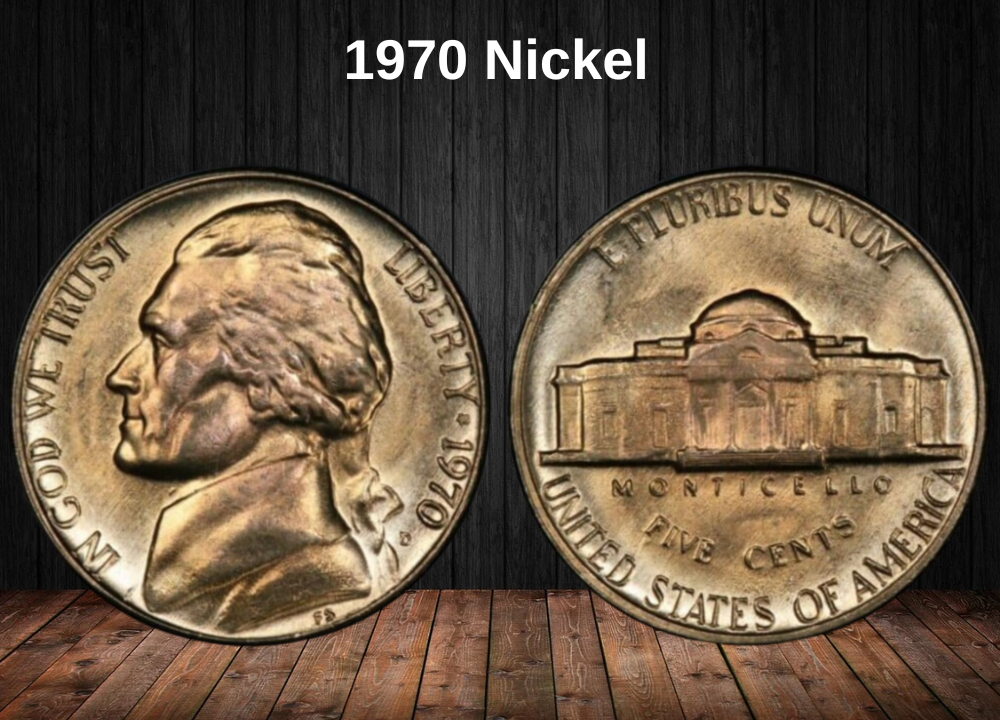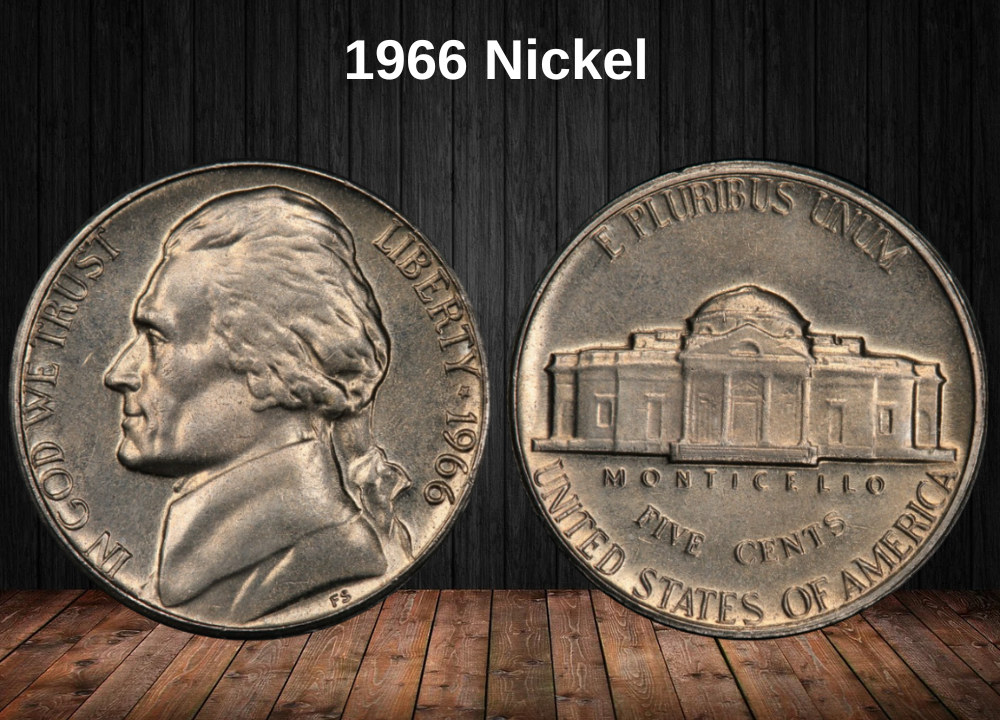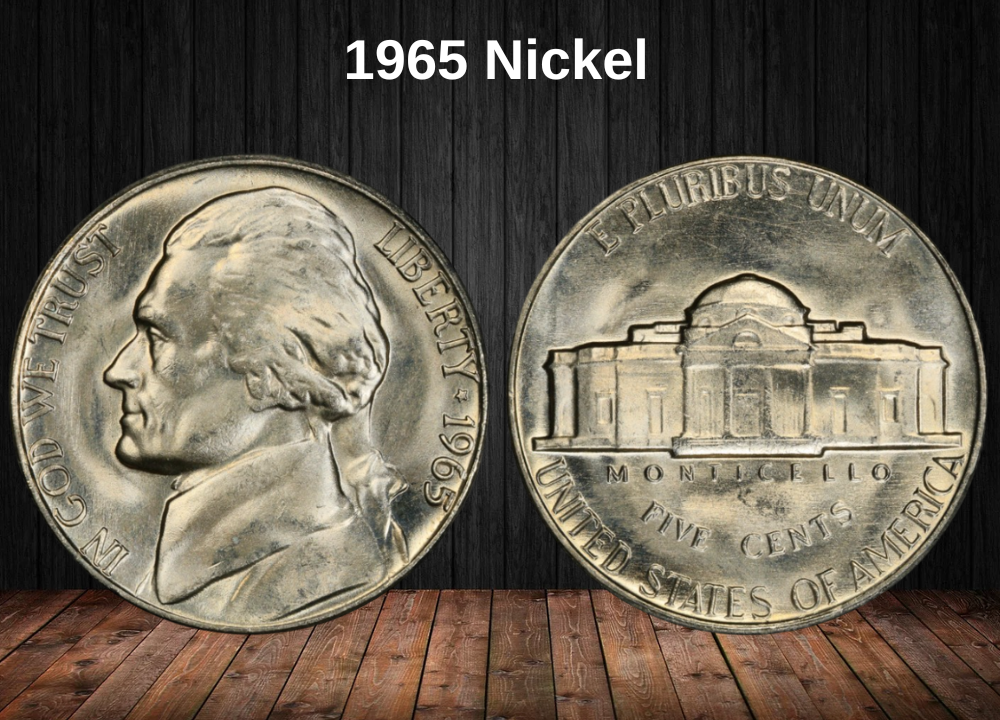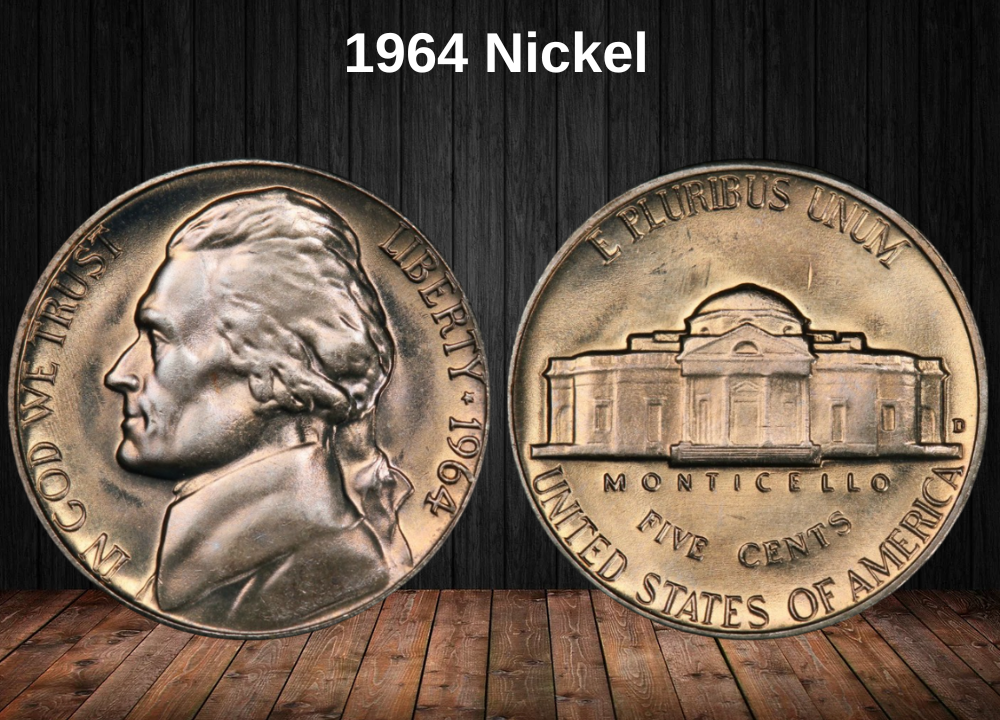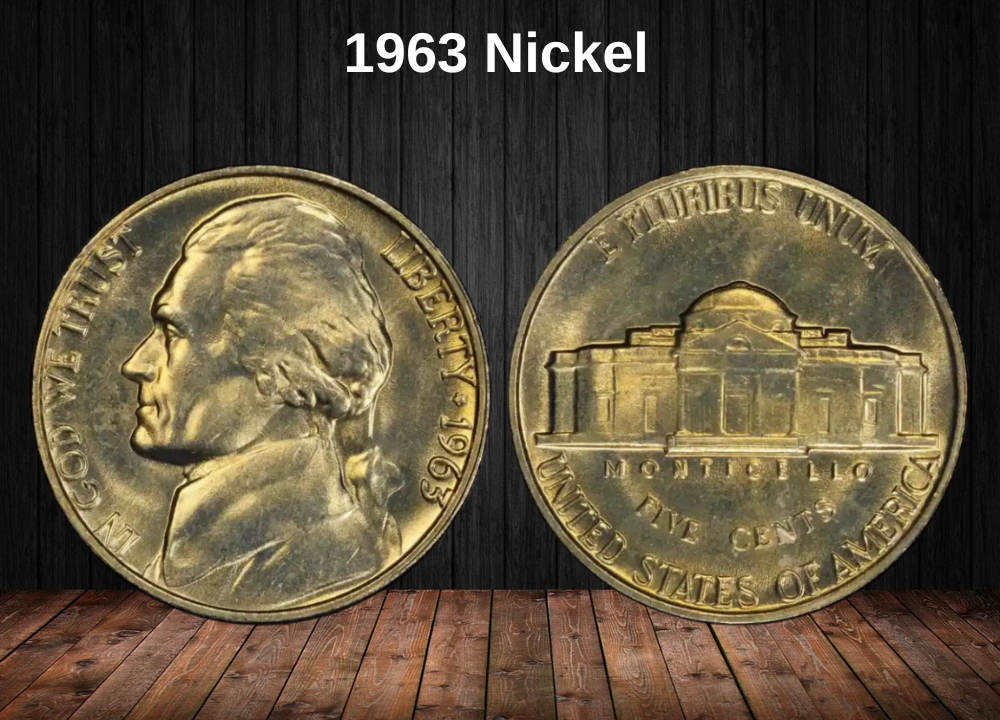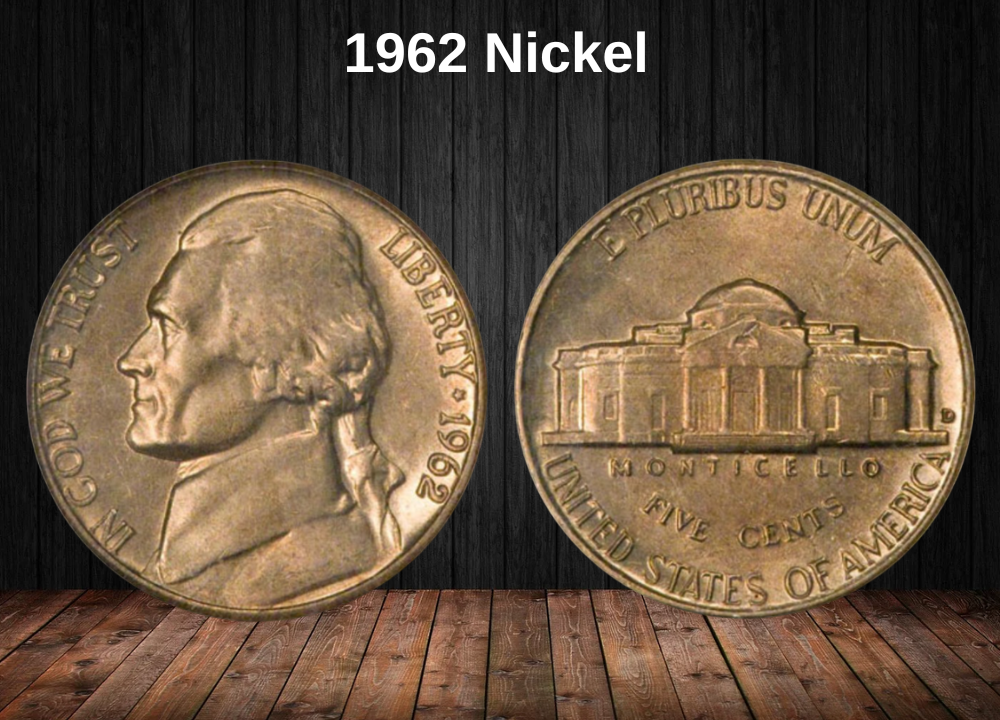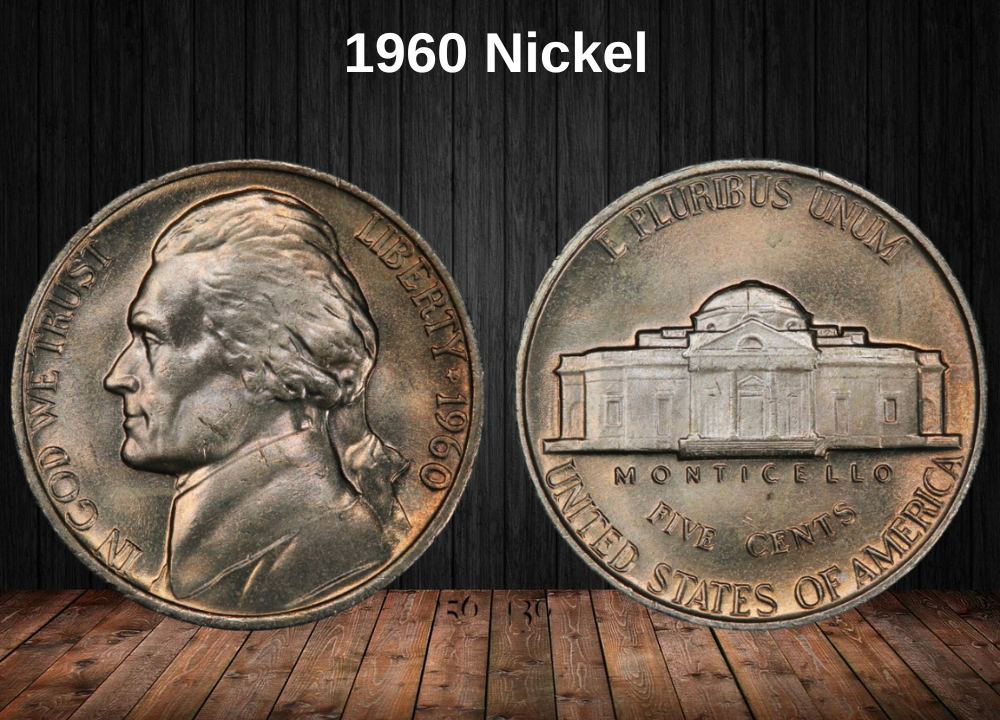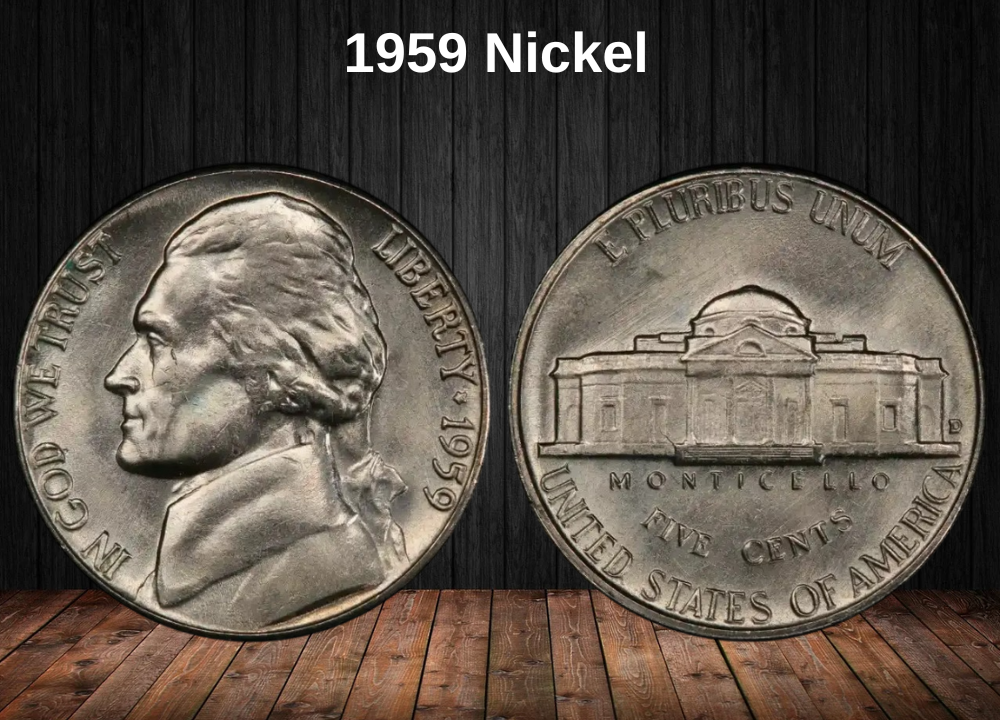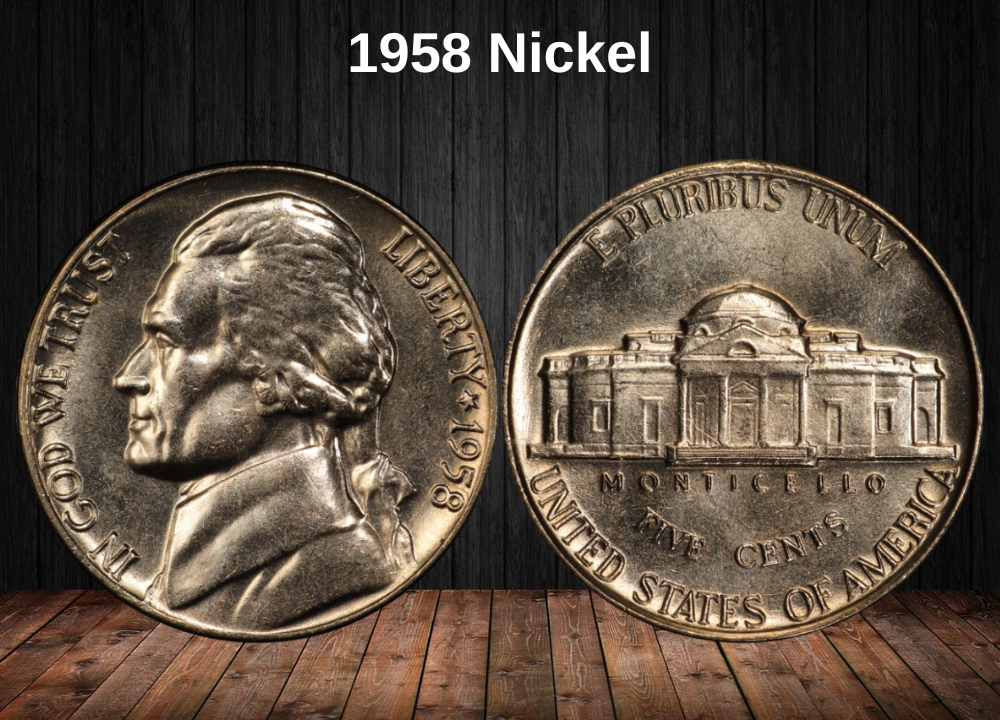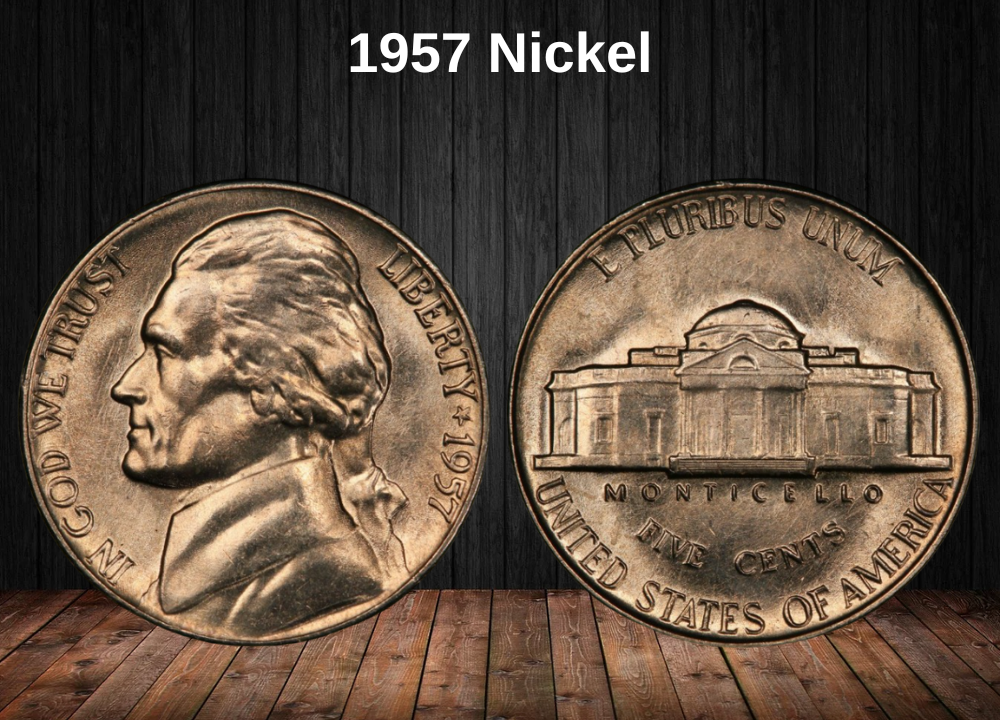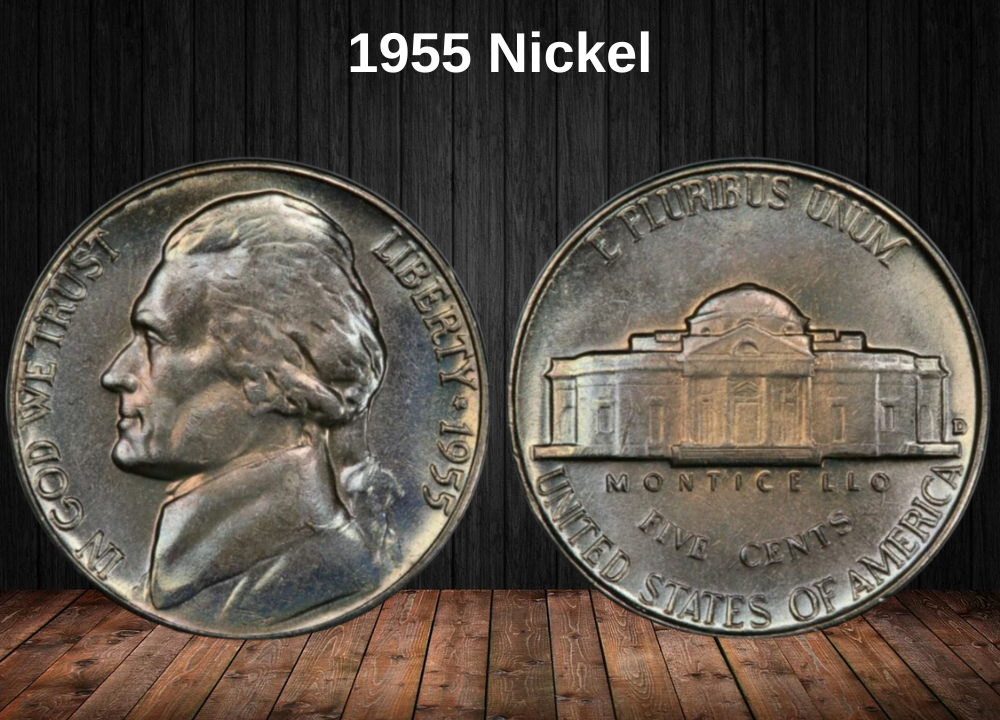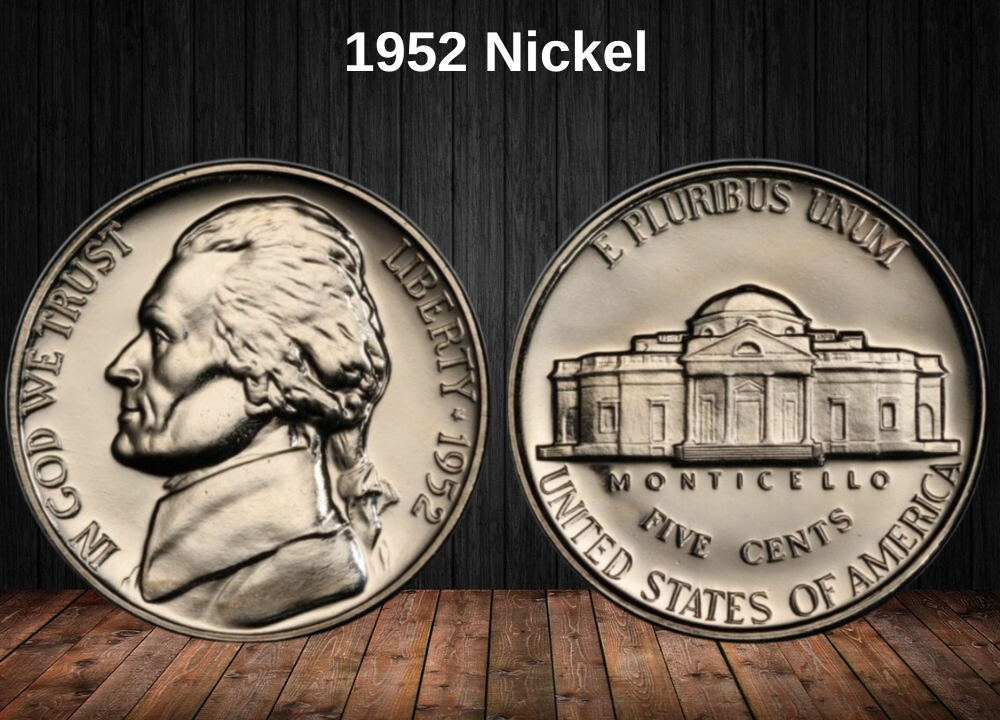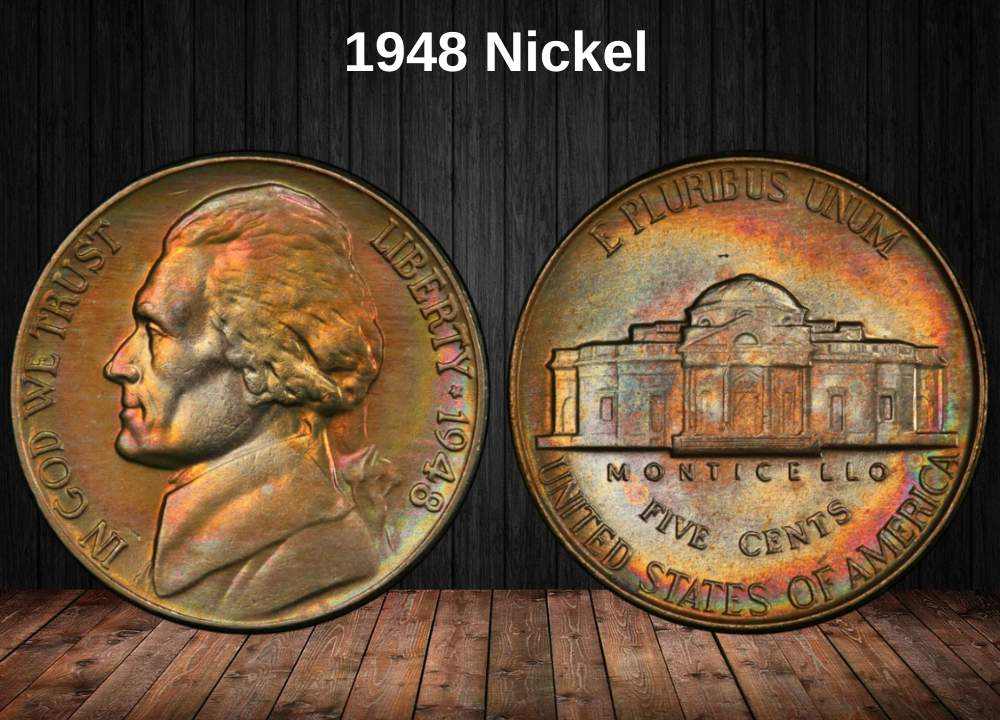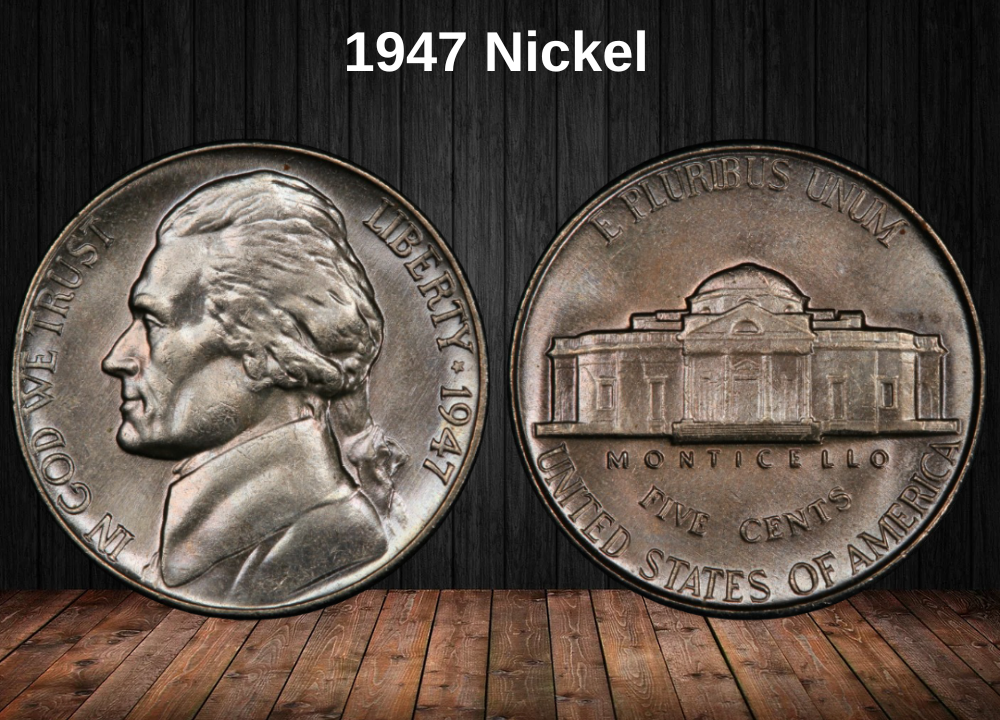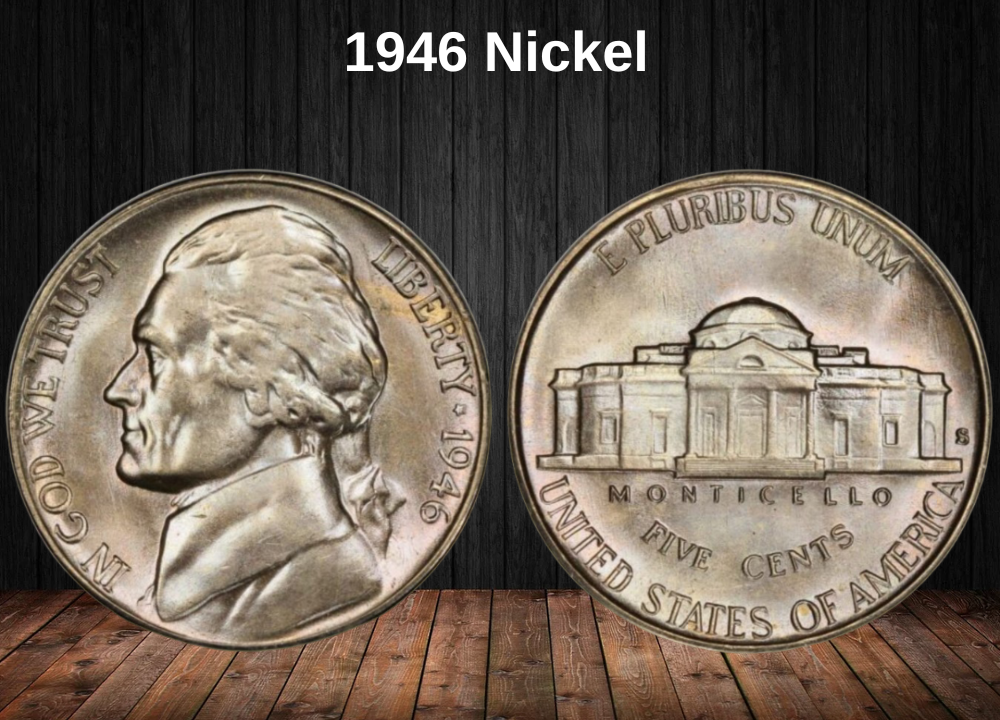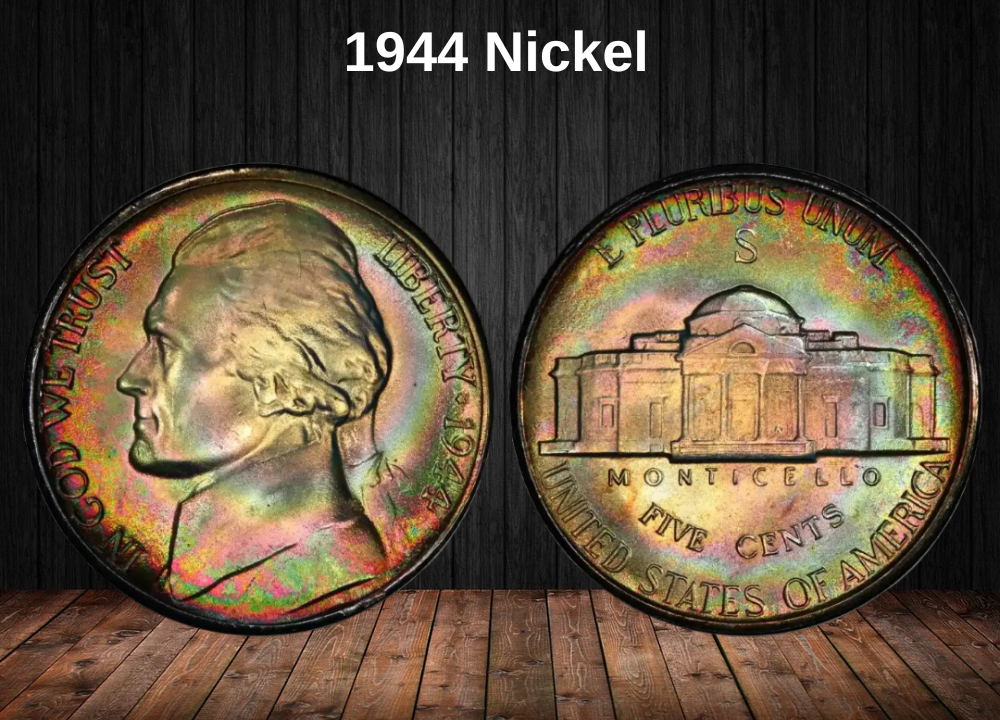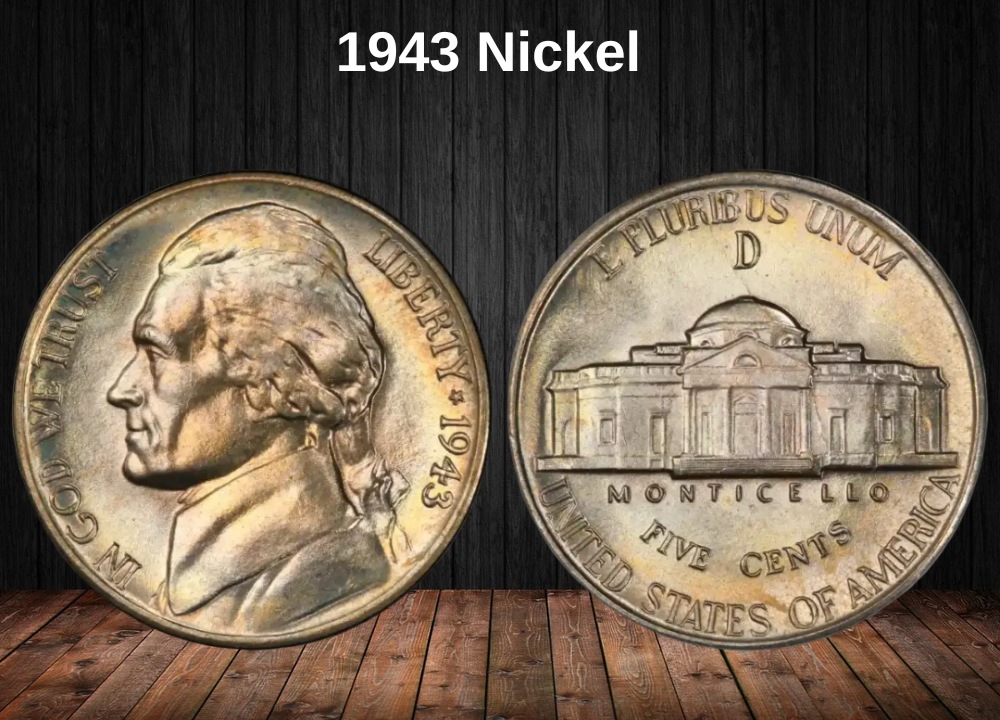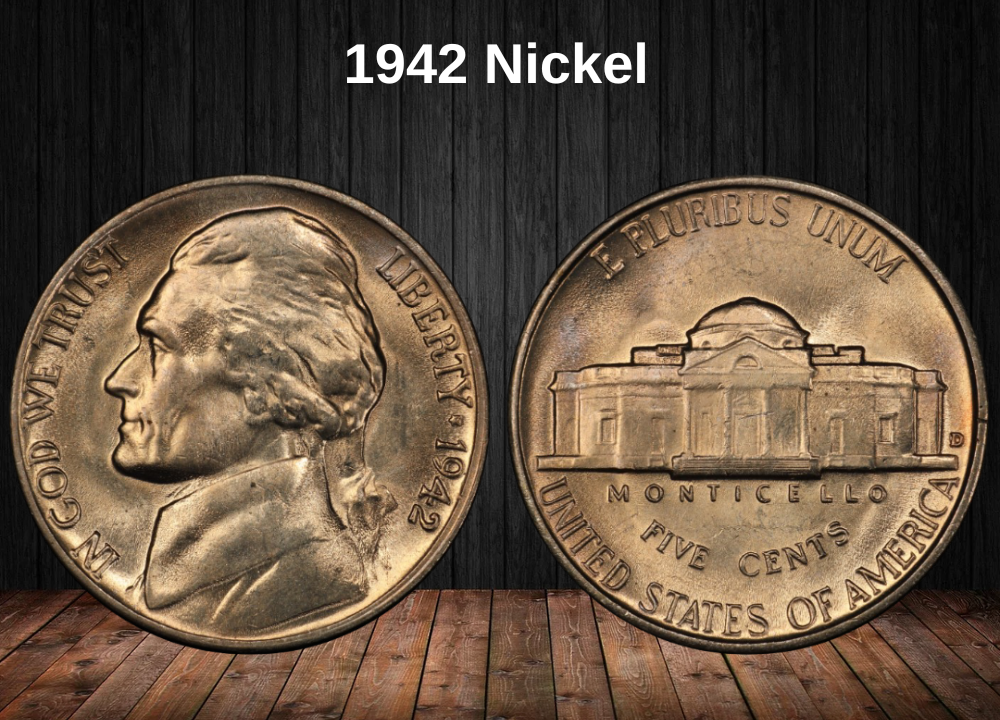Have you ever stumbled upon a 1954 Jefferson nickel in your spare change and wondered if it might actually be worth something?
Or perhaps you’re thinking about adding a 1954 nickel to your growing Jefferson nickel collection?
These coins have been in circulation for over eight decades and are among the most sought-after by collectors. Depending on its condition and mint mark, a 1954 nickel can hold more than just face value.
That’s why we’ve created this comprehensive guide—to give you a full breakdown of the 1954 Jefferson nickel’s value.
We’ll cover its historical background, distinct characteristics, grading insights, and some fascinating error coins that could be worth hundreds or even thousands of dollars.
Let’s dive in and find out: What is a 1954 Jefferson nickel really worth?
1954 Jefferson Nickel Value Table
| Mint Mark | MS/PF60 | MS/PF63 | MS/PF65 | Uncirculated (MS67/PF69) |
|---|---|---|---|---|
| 1954 (No Mint Mark) | $2 | $4 | $20 | $575 |
| 1954-D | $2 | $7 | $34 | – |
| 1954-S | $2 | $6 | $25 | $675 |
| 1954 Proof | $6 | $12 | $20 | $275 |
The History Of The 1954 Nickel
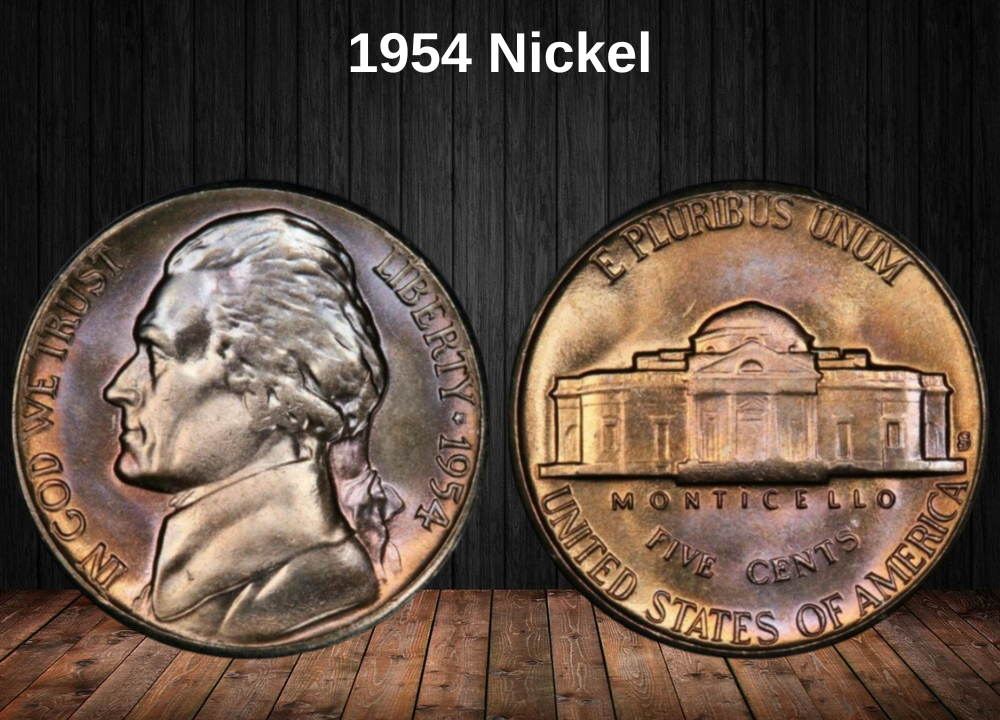
The 1954 nickel is part of the well-known Jefferson nickel series, which made its debut in 1938. It took the place of the Buffalo nickel, a coin that had been produced for 25 years (from 1913 to 1938). Since that time frame fulfilled the legal minimum for coin designs, the U.S. Mint was free to adopt a new one without needing approval from Congress.
A major reason behind the change was the Buffalo nickel’s difficulty in minting—its design caused excessive wear on dies and often resulted in poorly struck coins. The Mint took this opportunity to commission a new coin that would celebrate Thomas Jefferson, one of the nation’s Founding Fathers and its third president. To find the right artistic concept, a public competition was organized.
The winning entry came from Felix Schlag, a German-American sculptor. Although his original submission underwent a few design revisions, it was eventually finalized and approved for production.
By October of 1938, Jefferson nickels were being struck at the Philadelphia, Denver, and San Francisco mints, and they began circulating widely in November.
The coin’s original metal content was 75% copper and 25% nickel. But with the onset of World War II, nickel was needed for military manufacturing. In response, the Mint altered the coin’s composition in 1942, using a blend of 56% copper, 35% silver, and 9% manganese. This temporary alloy remained in place during the war years and is now a distinguishing feature of Jefferson nickels from that period.
The Features Of The 1954 Nickel
The Obverse of the 1954 Nickel
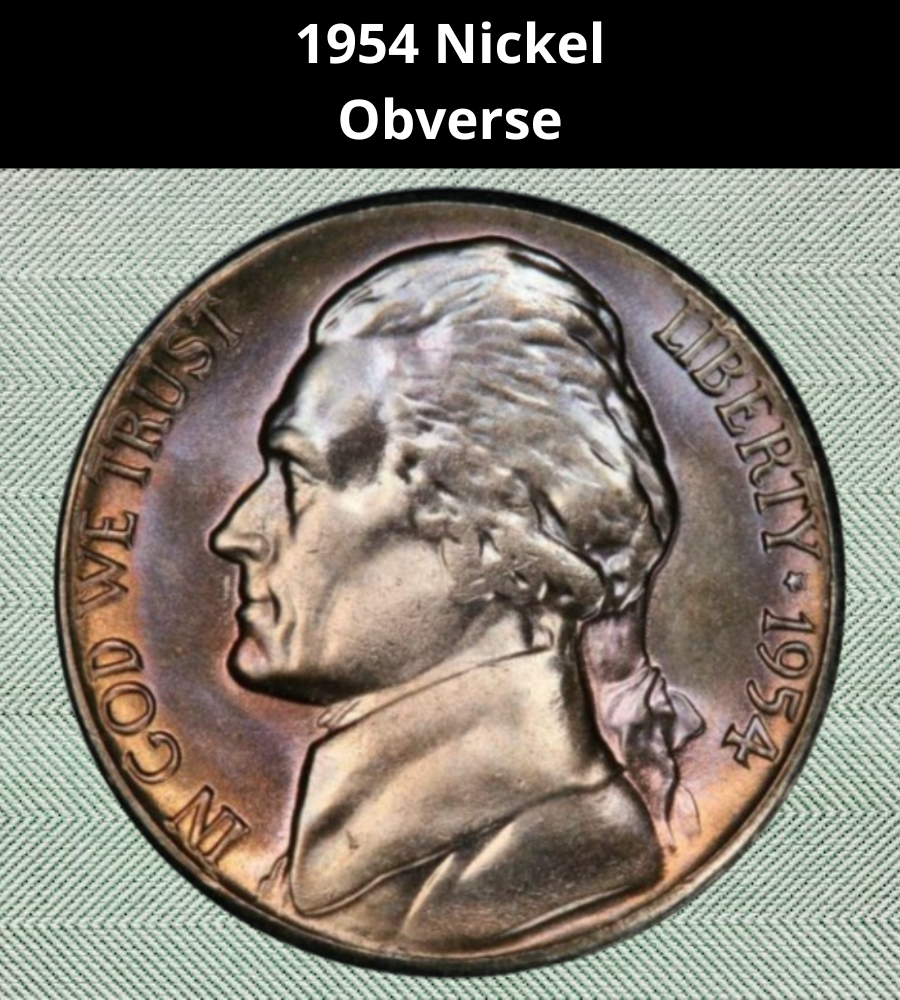
The front (obverse) side of the 1954 Jefferson nickel features a left-facing profile of President Thomas Jefferson, with his hair tied back in a low ponytail.
To the left of his portrait, along the coin’s edge, you’ll find the national motto “IN GOD WE TRUST.” On the right side, the word “LIBERTY” is inscribed, followed by the coin’s minting year, 1954, with a small star placed between them.
The Reverse of the 1954 Nickel
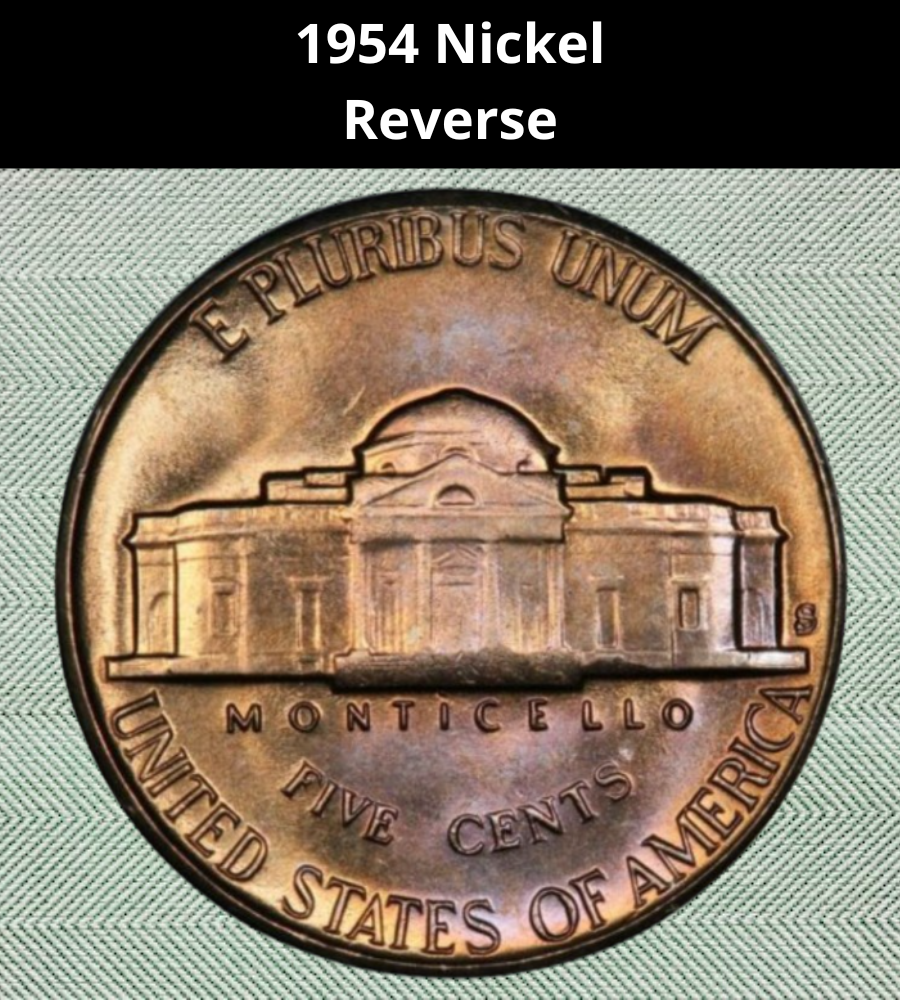
The reverse side of the 1954 Jefferson nickel showcases a detailed image of Monticello, Thomas Jefferson’s Virginia estate. This architectural depiction highlights key elements of the building, including its dome, front pillars, and staircase leading to the entrance.
Just below the structure, the word “MONTICELLO” is clearly inscribed. Beneath that, you’ll find the coin’s value written as “FIVE CENTS.”
At the top edge of the coin appears the Latin motto “E PLURIBUS UNUM,” while the bottom rim features the inscription “UNITED STATES OF AMERICA.”
Additional Details of the 1954 Jefferson Nickel
The 1954 Jefferson nickel is made from a metal composition of 75% copper and 25% nickel.
It’s a relatively sizable coin, with a diameter of 21.20 mm, a thickness of 1.96 mm, and a weight of 5.00 grams. The coin has a smooth, plain edge with no reeding.
In terms of mint marks, coins produced at the Denver Mint bear the letter “D,” while those from the San Francisco Mint carry an “S.” However, nickels minted in Philadelphia in 1954 were issued without any mint mark on either side of the coin.
Grading the 1954 Jefferson Nickel
As Jefferson nickels have become increasingly popular among collectors, the difference in value between lower-grade and high-grade coins has grown significantly.
When evaluating your 1954 nickel, it’s best to focus on those in mint state (uncirculated) condition. Here are key points to consider when grading your uncirculated coin:
- Luster: The coin should have its original, full shine on both the obverse and reverse. Any dullness or wear, especially on raised areas, lowers the grade.
- Obverse Details: Look closely at high-wear spots like Jefferson’s hair, the area above his eye, his shoulder, and collar. These should exhibit a bright, frosted finish with no interruptions in brilliance.
- Reverse Details: Check the elevated sections such as the triangles on Monticello’s roof, columns, and stairs. These should also retain their original luster to qualify as uncirculated.
Common Grading Scale for Jefferson Nickels
| Grade Number | Description |
|---|---|
| 1 | Basal State |
| 2 | Fair |
| 3 | Very Fair |
| 4, 5, 6 | Good |
| 7, 8, 10 | Very Good |
| 12, 15 | Fine |
| 20, 30 | Very Fine |
| 40 | Extremely Fine |
| 50 | About Uncirculated |
| 60 | Mint State |
| 65 | Mint State |
| 70 | Mint State (Perfect) |
For an accurate valuation, it’s essential to refer to detailed grading guides and use this scale to determine the precise condition of your coin. Proper grading is a crucial step in understanding your nickel’s true worth.
1954 Nickel Value Guide
Here, we’ll explore the key question: How much is a 1954 nickel really worth?
The value of a 1954 Jefferson nickel depends on several factors, including its condition, rarity, and any minting errors it might have. Generally, uncirculated coins that show Full Steps on the Monticello building on the reverse side are significantly more valuable than those that have been circulated and show signs of wear.
There are four main varieties of the 1954 nickel, each with its own value range. These are:
- 1954 Nickel with No Mint Mark
- 1954-D Nickel (Denver Mint)
- 1954-S Nickel (San Francisco Mint)
- 1954 Proof Nickel
We’ll examine each variety in detail below to help you understand their individual worth.
1954 No-Mint Mark Nickel Value
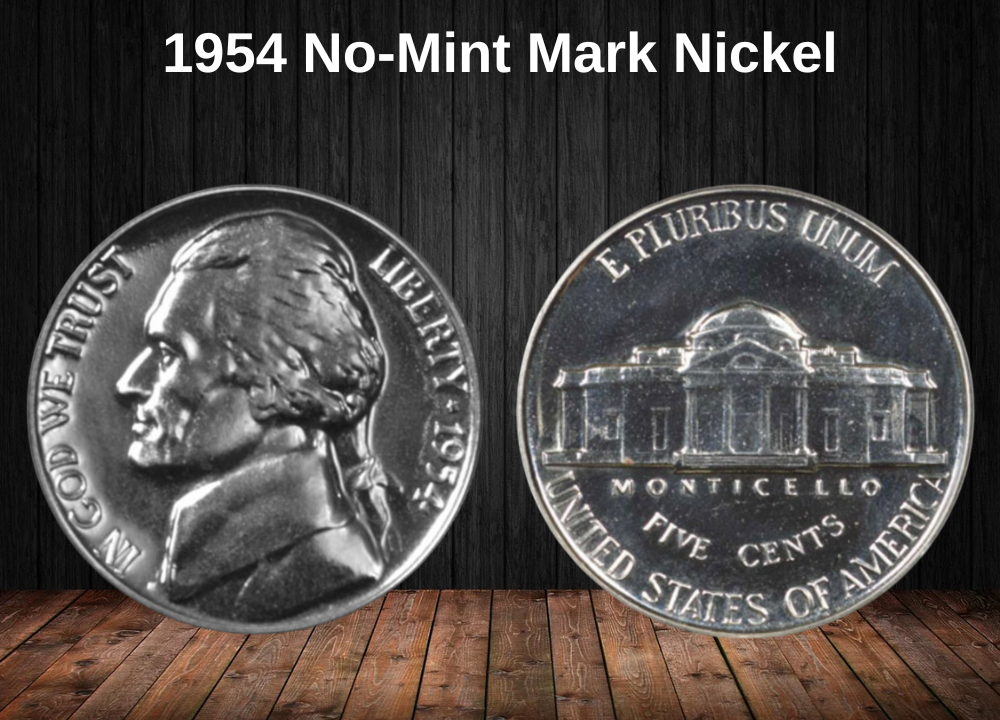
In 1954, the Philadelphia Mint produced approximately 47,684,050 Jefferson nickels. Following the usual practice, these coins carry no mint mark on either side.
This mintage was the second largest that year, just behind Denver’s output. When found in circulated condition, these no-mint mark nickels typically sell for around 10 to 15 cents—just slightly above their face value of five cents, so they’re not highly profitable in worn condition.
For uncirculated coins, prices are more attractive but still affordable. An MS60 grade (mint state) can start at about $2, while a higher grade like MS65 can command around $20. Exceptional examples in gem condition with an MS67 grade may reach values as high as $575.
An important factor influencing value is the presence of Full Steps on the Monticello building shown on the reverse. Coins with all six full steps are considered especially well-struck and tend to be worth more. For instance, a 1954 no-mint mark nickel with six full steps graded MS65 can fetch up to $575, whereas a similar coin with only five steps might be valued near $300.
One of the rarest and most valuable examples was a Full Steps 1954 no-mint mark nickel graded MS66, which sold for a remarkable $8,813 at a 2012 auction by Stack’s Bowers.
1954-D Nickel Value
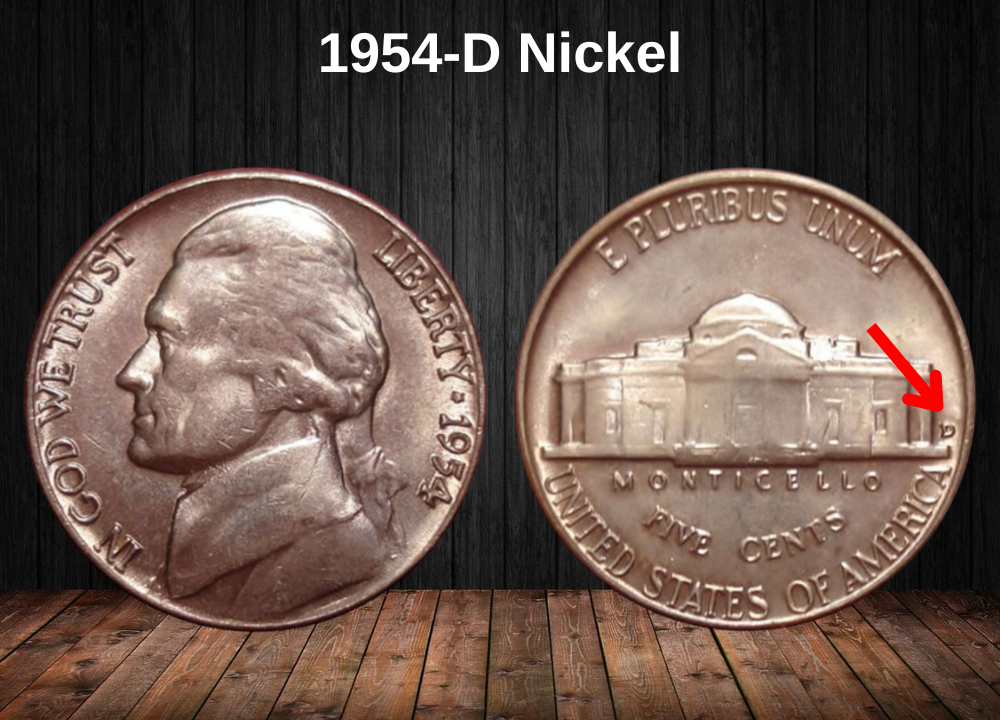
The Denver Mint produced the largest number of Jefferson nickels in 1954, striking approximately 117,183,060 coins. These nickels can be identified by the “D” mint mark located on the reverse side, near the rightmost pillar of Monticello.
Because of this high production, the 1954-D nickels are very common and easy to find, even in uncirculated condition, often at reasonable prices.
In circulated condition, these nickels typically sell for around 10 to 15 cents, just slightly above their face value, so they generally aren’t highly valuable in worn form.
For uncirculated examples, prices remain accessible: an MS60 graded 1954-D nickel usually costs about $2, while an MS65 can go for around $34.
The value can jump significantly if the coin features the coveted Full Steps on Monticello. A 1954-D nickel graded MS65 with all six full steps may be worth up to $1,000, while an MS66 coin showing five full steps can fetch as much as $3,850.
The record for the most expensive 1954-D nickel was set in 2020 when an MS66 Full Steps example sold for a staggering $9,694 at a Legend Rare Coin Auctions event.
1954-S Nickel Value
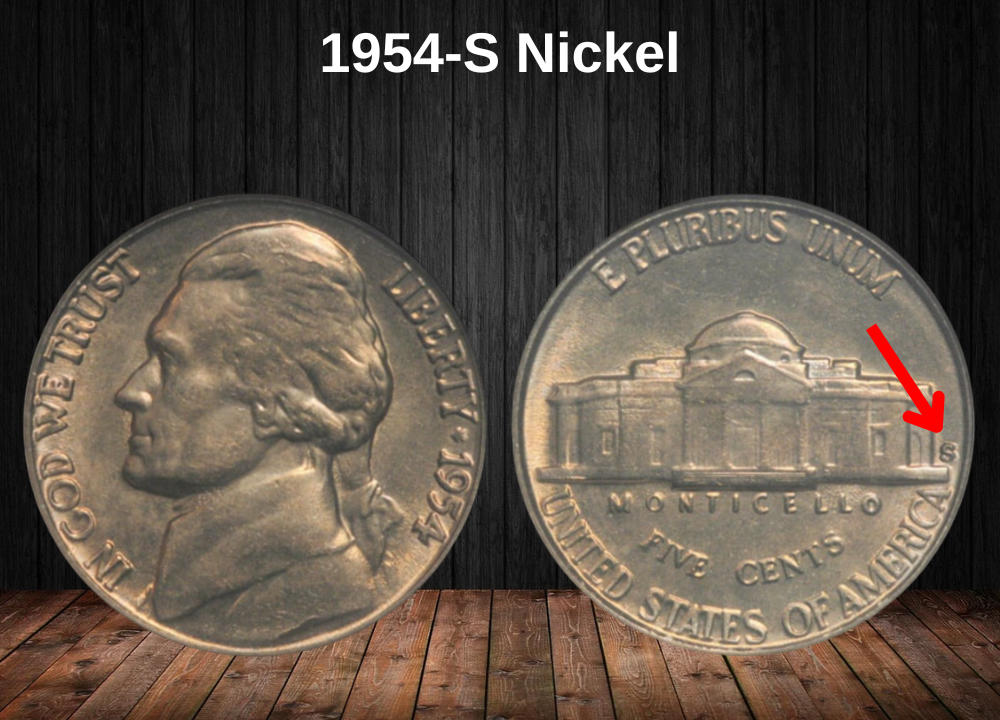
Among the three mints producing Jefferson nickels in 1954, the San Francisco Mint had the lowest output, striking just 29,384,000 coins. This was actually the final year San Francisco produced Jefferson nickels, so many of these coins were saved by collectors, making mint condition examples relatively easier to find.
These nickels carry an “S” mint mark on the reverse, located at the far right pillar of Monticello.
While 1954-S nickels are generally common, those with the highly sought-after Full Steps are extremely rare. The Professional Coin Grading Service (PCGS) reports that only about 25 Full Steps examples have been officially certified. These coins likely come from the earliest strikes at the San Francisco Mint that year.
The 1954-S nickels are known for a weaker strike, even in higher grades. Circulated coins usually sell for between 10 and 20 cents. In uncirculated condition, prices range from around $2 for MS60 examples up to about $675 for MS67 coins.
Finding a 1954-S nickel with all six Full Steps is nearly impossible. Most known examples show only five full steps, which are still quite rare. MS66 coins with five steps can command prices as high as $22,500.
In a notable sale in 2020, Legend Rare Coins Auction sold a 1954-S nickel graded MS67 with full steps for an impressive $35,250.
1954 Proof Nickel Value
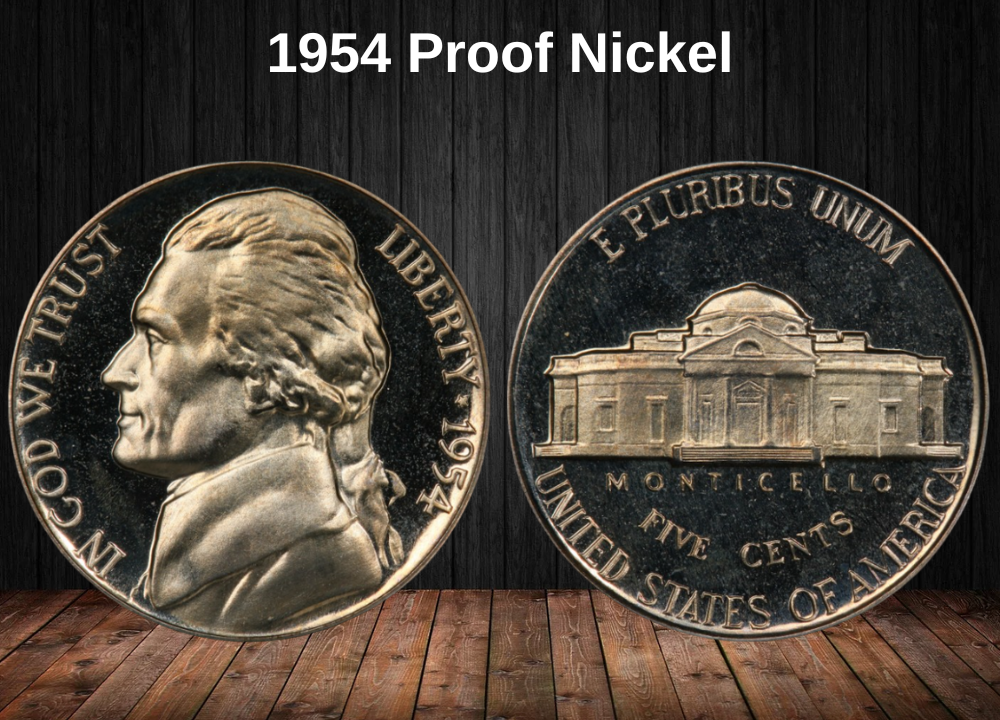
Besides the regular circulation strikes, the Philadelphia Mint also produced proof nickels in 1954. These proof coins are distinguished by their exceptional luster and sharply detailed designs, struck on a smooth, highly polished planchet.
Approximately 233,300 proof nickels were made that year, making it one of the lower mintages within the Jefferson nickel series. Many of these proof coins were carefully saved by collectors, so well-preserved examples from 1954 are relatively easy to find.
The Professional Coin Grading Service (PCGS) has graded and certified hundreds of these proofs, mostly in the PF68 and PF69 range, offering collectors a broad selection of high-quality specimens.
A 1954 proof nickel graded PF69 typically sells for around $275. However, proof coins with cameo or deep cameo designations can command much higher prices. For instance, a cameo PF69 can be worth up to $800, while a deep cameo PF68 example may reach values as high as $2,150.
Rare 1954 Nickel Errors List
1954 Double Die Reverse Nickel Error
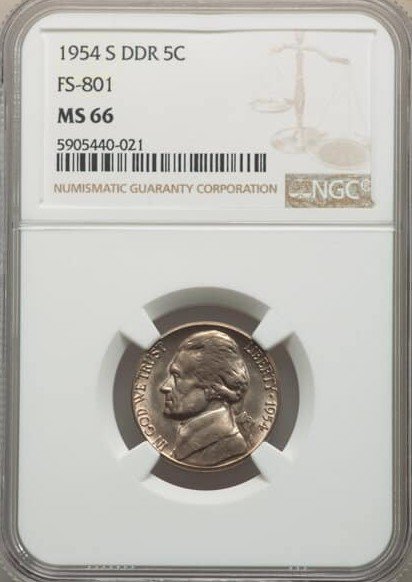
Doubled die errors are fairly common among 1954 Jefferson nickels.
This type of error happens when the striking hub misaligns the design on the die, causing the image to be stamped twice—slightly offset—onto the coin’s surface. As a result, you’ll see a noticeable doubling of certain design features.
On 1954 nickels, this doubling is most apparent on the reverse side, especially around the Monticello steps and the surrounding lettering.
Some examples also exhibit doubling on the obverse, mainly near Jefferson’s eyes, as well as in the inscriptions and lettering.
Coins with a 1954 doubled die error can be valued at up to $50, depending on the severity and clarity of the doubling.
1954 Repunched Mint Mark Nickel Error
One of the most notable and collectible errors in the 1954 Jefferson nickel series is the repunched mint mark, often referred to as an S over D error.
This mistake happened when a mint employee mistakenly used a “D” die—intended for Denver-minted coins—to strike coins at the San Francisco Mint. Once the error was discovered, an “S” mint mark was stamped over the existing “D” on the die.
If you examine certain 1954-S nickels closely, you can spot the faint outline of the “D” underneath the “S.”
These error coins typically sell for around $20, but high-grade examples can be much more valuable. For instance, a specimen graded MS66 sold for an impressive $3,450 at a Heritage Auctions event in 2008.
1954 Off-Center Mint Mark Nickel Error
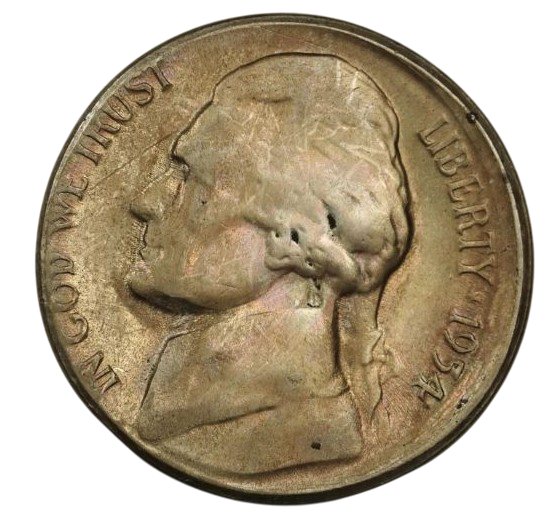
Off-center errors happen when the coin’s design is struck misaligned, causing the image to be shifted away from the center of the coin.
The value of an off-center error depends largely on how far off the strike is—the greater the off-center percentage, especially over 50%, the more valuable the coin becomes.
For 1954 nickels, this error is usually seen on the obverse side, where Jefferson’s portrait can be off-center by about 50% or more.
A 1954 nickel with such an off-center strike can be worth around $100 or higher, depending on the overall condition and quality of the coin.
Where to sell your nickel?
Now that you’re aware of your nickel’s value, you may be curious about the best places to sell it. Don’t worry: here’s a rundown of some top online marketplaces where you can conveniently sell your nickels, along with their benefits and drawbacks.
Explore the best platforms for selling nickels online (advantages and disadvantages).
FAQ about 1954 Jefferson Nickels
1. What makes the 1954 Jefferson Nickel notable for collectors?
The 1954 Jefferson Nickel is part of the classic mid-century series and is especially interesting due to the presence of several mint varieties, including repunched mint marks and notable die variations. The year also saw relatively high mintages but varying strike quality among mints.
2. What mint marks were used on 1954 Jefferson Nickels and where were they minted?
- No mint mark: Philadelphia Mint
- “D” mint mark: Denver Mint
- “S” mint mark: San Francisco Mint
Philadelphia pieces are the most common; Denver and San Francisco coins can be scarcer in higher grades.
3. Are there any recognized varieties or errors specific to the 1954 Jefferson Nickels?
Yes, notable varieties include:
- Repunched Mint Marks (RPMs): Particularly visible on some Denver and San Francisco issues, where the mint mark appears doubled or shadowed.
- Die cracks and cuds: These are minor but collectible errors appearing on some coins.
- Full Steps (FS) variety: Full and distinct steps on Monticello’s staircase on the reverse are rare and highly valued by collectors.
4. What is the metal composition of the 1954 Jefferson Nickel?
The 1954 nickel is composed of 75% copper and 25% nickel, as the wartime silver composition ended in 1945.
5. How important is the Full Steps (FS) designation for 1954 nickels?
Very important. The Full Steps variety indicates a strong strike and is highly sought after, especially from the Denver and Philadelphia mints. FS specimens command a significant premium over standard strikes.
6. How does strike quality vary between mints for 1954 nickels?
- Denver mint coins often have stronger strikes, making Full Steps easier to find.
- San Francisco nickels typically have weaker strikes and FS coins from this mint are scarcer.
- Philadelphia nickels vary but often offer a good balance of strike quality and availability.
7. What is the typical value range for circulated 1954 Jefferson Nickels?
Circulated 1954 nickels generally range from 10 to 30 cents depending on condition and mint mark. Uncirculated or FS specimens can be worth several dollars to hundreds depending on grade.
8. Were any proof 1954 Jefferson Nickels produced?
Yes, the Philadelphia Mint produced proof sets in 1954, which included the Jefferson Nickel. These proofs have a mirror-like finish and are collectible, especially in higher proof grades like PR65 or above.
9. Are there any key details to watch for when authenticating a 1954 Jefferson Nickel?
Collectors should verify:
- Mint mark authenticity and placement
- Sharpness and completeness of Monticello’s steps for FS designation
- Signs of post-mint damage vs. mint errors
Professional grading services can provide authentication and grading for valuable specimens.
10. Where can I find reliable pricing and population reports for 1954 Jefferson Nickels?
Sources include:
- The “Red Book” (A Guide Book of United States Coins)
- PCGS and NGC population reports and price guides
- Auction results from major numismatic houses
These resources help gauge rarity and market value accurately.

